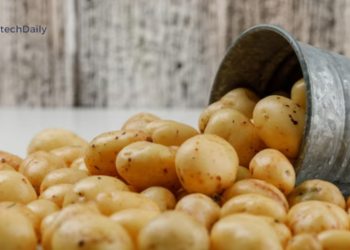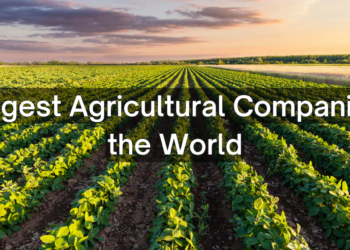In this article, we will explore the latest technological advancements in livestock management and monitoring, how they are revolutionizing the way farmers manage their herds, and the benefits they offer to both farmers and livestock. We will discuss various types of technology, including sensors, data analytics, and machine learning algorithms, and how they are being used in different agricultural settings.
Livestock management and monitoring have been a vital part of agriculture for centuries. In the past, farmers relied on their knowledge and experience to manage their herds, but today, technology is playing an increasingly important role in this field. Advances in sensors, data analytics, and machine learning algorithms have made it possible to monitor and manage livestock more effectively and efficiently.
In this article, we will explore the latest technological innovations in livestock management and monitoring. We will discuss the benefits of these technologies, their applications in different agricultural settings, and their impact on the agricultural industry as a whole.
The Need for Livestock Management and Monitoring:
Livestock management and monitoring are essential for farmers to ensure the health and well-being of their herds. In the past, farmers relied on visual observations and manual record-keeping to manage their livestock, which was often time-consuming and inefficient.
Today, with the help of technology, farmers can monitor their herds in real-time and make informed decisions about their management.

Livestock management and monitoring technology help farmers to identify issues early, such as illness or injury and take prompt action to prevent the spread of disease or further injury.
Additionally, monitoring technology can help farmers optimize feed and water usage, improve reproductive performance, and increase the overall productivity of their herds.
Types of Livestock Management and Monitoring Technology:
There are several types of technology used in livestock management and monitoring, including sensors, data analytics, and machine learning algorithms.
The most common types of livestock management and monitoring technology include wearable sensors, environmental sensors, and data analytics software.
Wearable sensors are used to monitor the health and behavior of individual animals. These sensors can track a range of parameters, including body temperature, heart rate, activity levels, and rumination.
This data is then used to identify potential health issues, optimize feeding and watering schedules, and improve overall herd management.
Environmental sensors are used to monitor the conditions in the barn or pasture, including temperature, humidity, and air quality. This information is used to optimize the environment for the animals, reducing the risk of heat stress, respiratory issues, and other health problems.
Data analytics software is used to analyze the data collected from sensors and other sources, providing farmers with insights into herd health and performance. Machine learning algorithms are used to identify patterns and trends, allowing farmers to make data-driven decisions about herd management.
Benefits of Livestock Management and Monitoring Technology:
The use of technology in livestock management and monitoring offers several benefits to farmers and their herds. These benefits include improved animal health and welfare, increased productivity, reduced labor costs, and improved environmental sustainability.
Livestock management and monitoring technology enable farmers to identify and treat health issues early, reducing the risk of disease spread and minimizing the need for antibiotics.
Additionally, optimizing feed and water usage can reduce the environmental impact of livestock farming, making it more sustainable in the long term. Improved productivity is another key benefit of livestock management and monitoring technology.
By tracking the performance of individual animals, farmers can identify areas for improvement, such as optimizing feed and water usage or improving reproductive performance. This can lead to increased yields, better quality meat and dairy products, and improved profitability.
Applications of Livestock Management and Monitoring Technology:
Livestock management and monitoring technology are used in a wide range of agricultural settings, from small-scale family farms to large commercial operations.
For example, in dairy farming, wearable sensors can be used to monitor milk production, allowing farmers to optimize feeding schedules and identify issues early.
Environmental sensors can be used to monitor temperature and humidity levels in the barn, ensuring that cows are comfortable and reducing the risk of heat stress.
In beef farming, wearable sensors can be used to monitor the weight and body condition of individual animals, allowing farmers to adjust feeding schedules and ensure that the animals are healthy and well-nourished.
Data analytics software can be used to analyze the performance of individual animals and identify areas for improvement, such as optimizing feed and water usage or improving reproductive performance.
In addition to traditional livestock farming, livestock management, and monitoring technology are also being used in aquaculture, poultry farming, and other types of animal agriculture.
Challenges and Limitations of Livestock Management and Monitoring Technology:
While livestock management and monitoring technology offer many benefits, there are also some challenges and limitations to consider.
One of the main challenges is the cost of implementing and maintaining these technologies, which can be a barrier for small-scale farmers or those with limited resources.
Additionally, some farmers may be hesitant to adopt new technologies, particularly if they have been managing their herds successfully without them.

There may also be concerns about data privacy and security, particularly with the use of wearable sensors that collect sensitive information about individual animals.
Finally, it is important to recognize that technology is not a replacement for good animal husbandry practices.
While these technologies can help farmers monitor and manage their herds more effectively, they should not be used as a substitute for regular veterinary care, proper nutrition, and other aspects of responsible animal management.
Conclusion:
Livestock management and monitoring technology are transforming the way farmers manage their herds, offering many benefits to both farmers and animals.
By using sensors, data analytics, and machine learning algorithms, farmers can monitor the health and behavior of their livestock in real-time, making informed decisions about herd management.
The benefits of livestock management and monitoring technology include improved animal health and welfare, increased productivity, reduced labor costs, and improved environmental sustainability.
However, there are also some challenges and limitations to consider, including cost, adoption, and privacy concerns.
Overall, the use of livestock management and monitoring technology is a promising development for the agricultural industry, offering a more efficient and sustainable approach to livestock management that benefits both farmers and animals.
As technology continues to advance, it is likely that we will see further innovations in this field, enabling farmers to produce high-quality meat and dairy products while ensuring the health and well-being of their herds.













